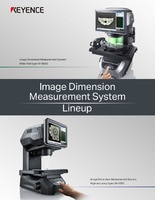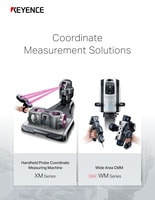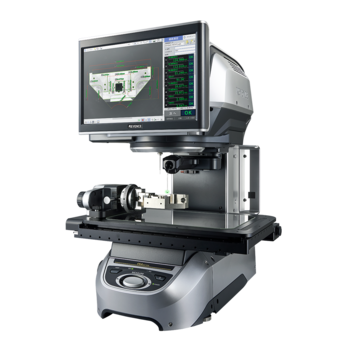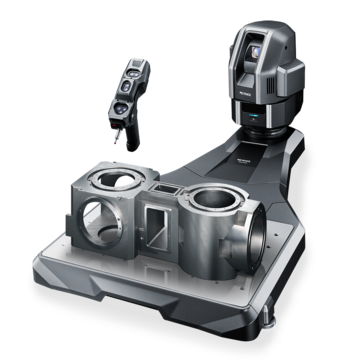Optical Comparator (Profile Projector)
Selecting Measurement Systems by Cost
A measurement system consists of tools and procedures used to assess the sizes and features of components, parts, and products. These systems are crucial in manufacturing, ensuring quality control, optimizing processes, and meeting industry standards.
Measurement systems include basic tools like rulers and tape measures, as well as advanced instruments such as laser trackers and coordinate measuring machines (CMMs). These enable accurate measurement of dimensions and attributes like length, diameter, and geometric tolerances. Additionally, measurement systems may involve software and data analysis methods to process and interpret measurement information.
This integration of hardware and software allows manufacturers to automate measurement processes, collect and store measurement data digitally, perform statistical analysis, and generate reports for quality assurance and process improvement purposes.
When considering the cost factor in selecting a measurement system, there are a few key considerations based on budget and application requirements. Understanding the features and differences between these measurement tools and the price of inspection systems is important to optimize resources and ensure accurate measurements.
Let’s take a closer look at some of the common measurement tools used by manufacturers. Using the chart above, we’ll start with the lowest cost and move up to the higher-cost systems that are available.
Low-Cost Measurement Systems
First, rulers and tape measures are typical low-cost measurement tools. However, they are essential items for manufacturing worksites. They provide quick measurements for a wide range of applications. Despite their affordability, their utility should not be underestimated, making them essential assets in any measurement toolkit.
Moving up the cost spectrum, vernier calipers are also relatively low-cost measuring instruments and are useful for measurements in units of 0.1 mm. Vernier calipers are available in both manual and digital varieties, with digital calipers featuring electronic readouts for easier and more accurate measurement reading. They are versatile low-cost measurement tools that are helpful for a wide range of measurement tasks and are common due to their accuracy.
While slightly more expensive than vernier calipers, dial gauges and height gauges further enhance precision, capable of measuring in units as small as 0.01 mm. These tools are particularly well suited for quality control processes and precision machining operations, where precision and accuracy are required.
Micrometers have a wide price range and can be selected according to the desired purpose or accuracy of measurement. These tools offer versatility in catering to varying levels of accuracy and budget requirements. Whether for basic measurements or highly precise readings, micrometers can help achieve your measurement goals.
We’re here to provide you with more details.
Reach out today!

High Precision Measurement Systems
For tasks demanding the highest level of accuracy, high-precision measuring instruments should be considered. These instruments are capable of measurements in units of 0.001 mm and are available as contact and non-contact types. Non-contact types include tools such as profile projectors and measuring microscopes, optical comparators, image dimension measurement systems, and multisensor measurement systems. Contact types include tools like portal-type 3D measuring machines. The lineup includes various models—from instruments requiring manual operation to instruments capable of automatic program-based measurement—and a wide variety of expensive, high-performance models.
This makes it necessary to consider the application and required accuracy in order to select the appropriate type. While the price of inspection systems using this technology may come at a higher cost, the benefits they offer in terms of accuracy and reliability justify the investment, particularly in industries where precision is not negotiable.
Get detailed information on our products by downloading our catalog.
View Catalog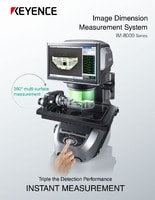

Factors to Consider When Selecting Measurement Systems Based on Cost
Overall, selecting measurement tools based on the price of an inspection system involves weighing factors such as accuracy, precision, versatility, and long-term value. By looking at these key considerations, manufacturers can invest in measurement systems that improve performance while maximizing their operations.
Still have questions about selecting a measurement system that best fits your manufacturing applications and budget? Contact our team today, so we can walk you through these considerations.
Contact us to learn more about how our advanced technology can help take your business to the next level.
Contact Us
Related Downloads
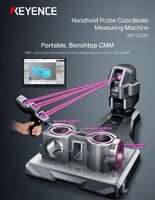
Brochure for the XM-5000 Series Handheld CMM. Portable CMM to easily and accurately measure 3D and GD&T features anywhere including the shop floor and in the machine tool.

Brochure for the IM-8000 Series Image Dimension Measurement System. Accurately measure parts in seconds at the push of a button.

